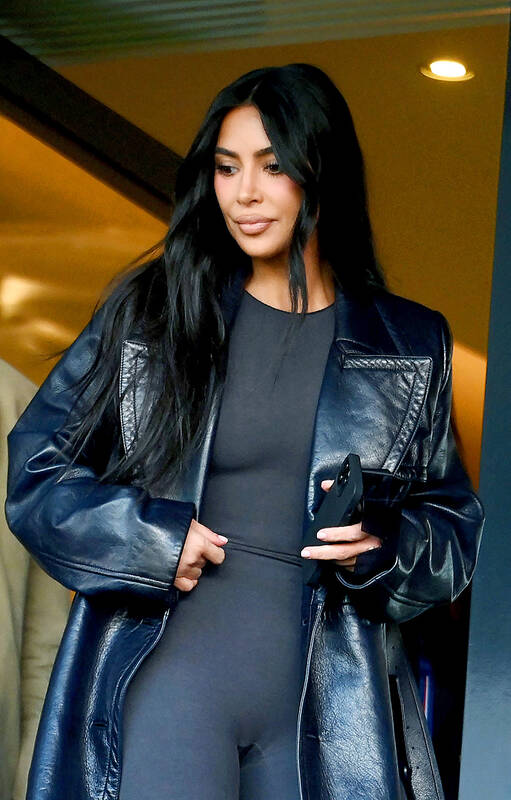In the early aughts, Emily Hund dreamed of a career as a journalist at a glossy fashion magazine. But after internships with New York media companies and having witnessed falling circulations and redundancies, she switched to studying one of the catalysts for these changes: social media and the influencers whose YouTube, TikTok and Instagram posts sell ideas, lifestyles and products to their followers.
The influencer industry ranges from global stars such as the Kardashians to micro-influencers who post on niche interests. What they have in common is that they work with brands to promote or sell to an audience. Hund is now a research affiliate at Pennsylvania University’s Center on Digital Culture and Society and her first book on influencers is published this month.
The Observer: How did social media take hold in people’s lives?

Photo: AFP
Emily Hund: There was a lot of optimism about social media in the 00s when technology first made it easier to share opinions. During the economic crisis of 2008, when people were out of work or looking for ways to make money, it really took off. Bloggers found loyal audiences, so advertisers got interested. This was all happening against a crisis in traditional media and they were looking for new ways to promote products.
TO: The first influencers such as Tavi Gevinson and Michelle Phan appeared as bloggers in the fashion and beauty sectors. How did unqualified people with no industry experience become gurus on social media?
EH: As a society, we venerate entrepreneurs and love the idea of people “being themselves” in academia and business, and also in celebrity culture. So there was fertile ground for social media influencers. They were seen as more authentic than traditional experts: just like you, they’re trying to figure out makeup or fashion. That gave them credibility.
TO: But “authentic” is such a nebulous quality. How did it become a measure of an influencer’s success?
EH: There was a huge influx of influencers after the first wave got recognition and money. That led to a flood of content, and all the advertising and marketing people jostled around trying to work out what to do with it. It was no longer enough to be influential in the quantitative sense — the number of followers you have, your engagement rate. On top of that, you had to prove you were “more real” than the next person; not only true to yourself, but an authentic match to a brand.
TO: For a long time influencers were vehicles for commercial messaging but now it’s about spreading ideas as well as products?
EH: That sounds horrible. I thought being an influencer was fun? I would not call it a good job. Those who get million-dollar deals are a microscopic slice of a huge industry. There’s a lot of troubling racial and gender dynamics and there’s also inequality between influencers and the social media platforms. At the start, bloggers just posted to their personal blog, but then Meta and TikTok ate the world. Those companies control your content and visibility and there is no transparency about their algorithms.
The interviewees I spoke to have a constant fear of running foul of the brands or their followers. If engagement tanks, it’s really hard. If you get a bad response to a picture of you in a swimsuit or something, you wonder if people think you’re ugly; and if it was sponsored content, you don’t know if the brand will work with you again. Sometimes you just have to face the fact that people don’t like you any more.
TO: The influencer industry has a mainly female workforce. Do you think sexism is involved in the bad working conditions?
EH: Absolutely. One of my first papers analyzed influencer aesthetics, and we found that those ranked top by marketing and advertising fell into stereotypical western beauty ideals: thin, feminine, white, straight.
The fact that women drove the industry also meant it didn’t get taken seriously, or it was disparaged as women being self-involved or vain. It took events such as the 2017 Fyre festival [a disastrous music event hyped on social media] to make the broader public realize these people had genuine power.
TO: How has the influencer industry changed as it has developed?
EH: Now cultural and political industries are involved it’s more complex. For a long time influencers were vehicles for commercial messaging but now it’s blatantly about spreading ideas as well as products. There was an uptick in the time people spent on social media during lockdown and lots of new types of influencers appeared — scientific and medical influencers, but also people who positioned themselves as experts or sceptics.
That couldn’t have happened without Instagram Stories and TikTok: you can’t use a beautifully curated Instagram post to sell a conspiracy theory, but short videos are ideal.
TO: Is it common for influencers to knowingly mislead their audience, as in cases such as the “pump and dump” securities fraud (in which social media influencers in the US were charged with feeding followers misinformation in a $100m stock scheme)?
EH: The influencers I’ve interviewed expressed their desires to be themselves online as best they could. But one phrased it in a particularly memorable way: being “authentic but not accurate.” Portray yourself in a way that feels real enough, and is basically true, but maybe you don’t actually use this product, or do this meal or exercise routine every day, or maybe there are relationships behind the scenes that aren’t fully disclosed.
It’s hard to say how common coordinated schemes such as pump and dump are. If someone is committing a crime on the level of securities fraud, that’s not something you necessarily see every day — though that doesn’t mean there aren’t people out there trying.
TO: What do you think of Kim Kardashian promoting cryptocurrencies? Isn’t that an odd combination?
EH: Every level of influencer can offer something to an advertiser. Working with Kim Kardashian, who has hundreds of millions of followers along with celebrity cachet, can quickly get your brand a ton of exposure and drive sales. What I don’t understand, frankly, is the appeal of these deals to her and others at her level who don’t necessarily need the money. Financial and health products, in particular, carry a lot of risk to her personal brand and have got her in trouble with the US Federal Trade Commission.
TO: What did you think of the viral TikTok by Romy Mars (in which the 16-year-old daughter of film-maker Sofia Coppola makes vodka pasta sauce and reveals she was grounded after trying to charter a helicopter using her father’s credit card to fly to a meal with a friend)? Is it a hoax?
EH: It’s a great example of how we can never know with certainty what the truth is behind influencers’ seeming authenticity. She was either leveraging the technology and communicative norms of TikTok to make a piece of nepo baby [nepotism baby, the successful children of celebrities] art or was a teen sharing what was going on in her life. We can’t know. And that’s the point.
TO: Do you follow any influencers’ advice?
EH: I’m totally guilty of buying stuff suggested by influencers. In a world where you’re overwhelmed by information, they can give you a good recommendation. I bought a rug for my bedroom that I really like because of an influencer — and I still enjoy it five years later.
You just need to be aware that there are many levers at work behind the content we encounter. There’s a lot more to it than being ourselves.

“Why does Taiwan identity decline?”a group of researchers lead by University of Nevada political scientist Austin Wang (王宏恩) asked in a recent paper. After all, it is not difficult to explain the rise in Taiwanese identity after the early 1990s. But no model predicted its decline during the 2016-2018 period, they say. After testing various alternative explanations, Wang et al argue that the fall-off in Taiwanese identity during that period is related to voter hedging based on the performance of the Democratic Progressive Party (DPP). Since the DPP is perceived as the guardian of Taiwan identity, when it performs well,

The Taiwan People’s Party (TPP) on May 18 held a rally in Taichung to mark the anniversary of President William Lai’s (賴清德) inauguration on May 20. The title of the rally could be loosely translated to “May 18 recall fraudulent goods” (518退貨ㄌㄨㄚˋ!). Unlike in English, where the terms are the same, “recall” (退貨) in this context refers to product recalls due to damaged, defective or fraudulent merchandise, not the political recalls (罷免) currently dominating the headlines. I attended the rally to determine if the impression was correct that the TPP under party Chairman Huang Kuo-Chang (黃國昌) had little of a

At Computex 2025, Nvidia CEO Jensen Huang (黃仁勳) urged the government to subsidize AI. “All schools in Taiwan must integrate AI into their curricula,” he declared. A few months earlier, he said, “If I were a student today, I’d immediately start using tools like ChatGPT, Gemini Pro and Grok to learn, write and accelerate my thinking.” Huang sees the AI-bullet train leaving the station. And as one of its drivers, he’s worried about youth not getting on board — bad for their careers, and bad for his workforce. As a semiconductor supply-chain powerhouse and AI hub wannabe, Taiwan is seeing

Jade Mountain (玉山) — Taiwan’s highest peak — is the ultimate goal for those attempting a through-hike of the Mountains to Sea National Greenway (山海圳國家綠道), and that’s precisely where we’re headed in this final installment of a quartet of articles covering the Greenway. Picking up the trail at the Tsou tribal villages of Dabang and Tefuye, it’s worth stocking up on provisions before setting off, since — aside from the scant offerings available on the mountain’s Dongpu Lodge (東埔山莊) and Paiyun Lodge’s (排雲山莊) meal service — there’s nowhere to get food from here on out. TEFUYE HISTORIC TRAIL The journey recommences with